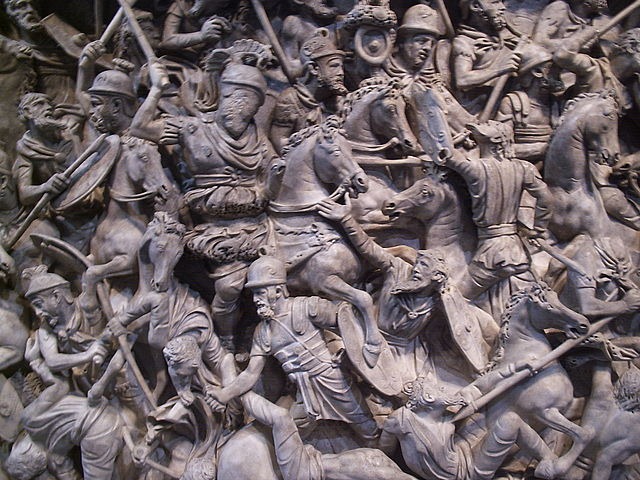More measles cases have been reported in the United States so far in 2014 — 592 cases from January 1 to August 29 — than during any year in the past two decades (see graph) (www.cdc.gov/measles/cases-outbreaks.html). The high incidence has occurred despite the fact that indigenous circulation of measles virus was declared eliminated in the United States in 2000 and in the Americas in 2002.
There are two major reasons for this resurgence. First, though significant progress has been made in reducing global measles incidence, there is still substantial circulation of the virus in other countries. Susceptible U.S. residents who travel to countries where measles is endemic or epidemic and susceptible residents of those countries who travel to the United States are bringing the virus here. Second, an increasing number of parents in this country are hesitant to have their children vaccinated, and such hesitancy has resulted in an accumulation of unvaccinated populations who can become infected and maintain transmission.
Measles is one of the most contagious of the vaccine-preventable diseases, with reproduction rates (R 0) estimated at 12 to 18 — meaning that the average person with measles would be capable of infecting 12 to 18 other people if all his or her contacts were susceptible.1 The herd-immunity threshold (the population immunity level needed to interrupt transmission) is usually calculated as (R 0−1)÷R 0; for measles, this threshold is on the order of 92 to 94% to prevent sustained spread of the virus — higher than the thresholds for almost all other vaccine-preventable diseases. Some measles outbreaks have occurred in populations with even higher immunity levels. In addition, virtually every measles infection becomes clinically apparent, resulting in some combination of cough, coryza, conjunctivitis, high fever, and erythematous maculopapular rash. Complications are common and may include otitis media, diarrhea and dehydration, pneumonia, encephalitis, and even death. In the United States, it has been estimated that 0.2 to 0.3% of people who become infected with measles die from its complications.2 In the developing world, the case fatality rate can be as high as 2 to 15%.1 As recently as 2012, an estimated 122,000 children died from measles.3
The licensure of the first live attenuated measles vaccine in 1963 offered the opportunity to prevent this health burden. Current vaccines are highly effective — about 94% for a single dose, if it's administered in the second year of life.2 With two doses administered on or after the first birthday and at least 1 month apart, almost all immunocompetent children are protected against measles for life. But vaccines don't save lives — vaccinations do. Vaccines that remain in the vial are completely ineffective.
Because of its high level of contagiousness, measles is the indicator disease for weaknesses of an immunization program. With gaps in immunization coverage, measles is often the first vaccine-preventable disease one sees, indicating that a theoretical problem, low immunization coverage, has been converted into a real problem of disease, disability, and deaths. A focus on eliminating measles in the United States led to our modern immunization program.4 Though we encountered multiple failures along the way, analysis of those program failures led to solutions and success, and for the most part we are still achieving high immunization coverage in most of the population and low morbidity from vaccine-preventable diseases.
Measles harms not only the individual but also the community. Persons with measles can transmit infection to children who are too young to be vaccinated yet are still susceptible, to people with legitimate contraindications to vaccination (such as severe immune deficiency), and to the few people who remain unprotected against the disease despite being vaccinated. In the United States, emergency efforts to prevent imported measles from reestablishing endemic transmission can be costly. Such responses often include labor-intensive efforts to identify, find, and quarantine exposed and possibly susceptible persons, the creation of emergency vaccination clinics, and other measures. A 2004 outbreak in Iowa resulted in estimated costs of $140,000 for local and state health departments to investigate, contain, and treat just three patients with confirmed cases and their more than 1000 identified contacts, including people who were exposed to the index case during air travel returning from India; that estimate doesn't include outside resources, such as those of the airlines or the federal government.5 The estimated cost of addressing seven confirmed cases of measles during an outbreak in two Arizona hospitals was $800,000. A large portion of that amount represented the cost of furloughing health care workers who had no evidence of measles immunity; the figure excludes the public health expenses incurred by state and local health departments and other entities involved in containing the outbreak.5
To prevent measles from being reestablished as an endemic disease in the United States, we must first do better in vaccinating our at-risk population. That means ensuring that vaccine is accessible to all who need it — especially to people traveling outside the Western Hemisphere and those traveling to the United States from countries with circulating disease — and convincing hesitant families both that the vaccine is safe and effective and that measles is not trivial and can result in serious illness.
The military adage “the best defense is a good offense” applies well to measles. The National Vaccine Advisory Committee (NVAC) recently released a report emphasizing that supporting global immunization programs not only has humanitarian value but also protects our own domestic health security.5 This year alone, there were at least 48 U.S. importations of measles from more than 30 countries — most notably, the Philippines, which saw an outbreak involving more than 47,000 cases and was the source of an estimated 22 importations to the United States. The NVAC advocates that the United States support efforts to eliminate measles in each of the World Health Organization's six geographic regions. In fact, although we have not yet set a global goal of measles eradication, all six regions have their own such goal.
Measles meets the biologic criteria for eradication. Humans are necessary to maintain the virus in nature, since there is no nonhuman reservoir. There is an effective intervention measure — measles vaccines. Diagnostic tests can confirm whether someone has measles. And proof of principle has been demonstrated by prolonged elimination of indigenous circulation of the virus in the Western Hemisphere.
It may be premature to embark on another global eradication effort until polio eradication is achieved; however, much more can be done to reduce measles transmission in its current reservoirs. We can increase support for improving global routine-immunization programs so that they include two doses of measles vaccine in their schedules and for ensuring that there is adequate vaccine and infrastructure to conduct special mass-vaccination campaigns against measles. Support is also needed for strengthening the global laboratory network to permit detection and analysis of which measles strains are persisting and which have been eliminated.5
We must also overcome vaccine hesitancy. Despite the overwhelming evidence that vaccines — including the measles, mumps, and rubella vaccine — are safe, too many people still believe that greater risk is posed by vaccinating than by not vaccinating. Research is needed on how best to address public concerns about vaccine safety. The lack of apparent measles disease in the United States — which is attributable to the enormous success of the U.S. immunization program — gives a false sense that there is little or no threat. Efforts are also needed to educate the public that measles is a serious disease, which no one need suffer from, and that vaccines are highly effective in preventing it.
In the end, we can best protect our population against measles by ensuring that people eligible for vaccination are vaccinated and by supporting global efforts to go on the offensive against this major cause of the global disease burden.




